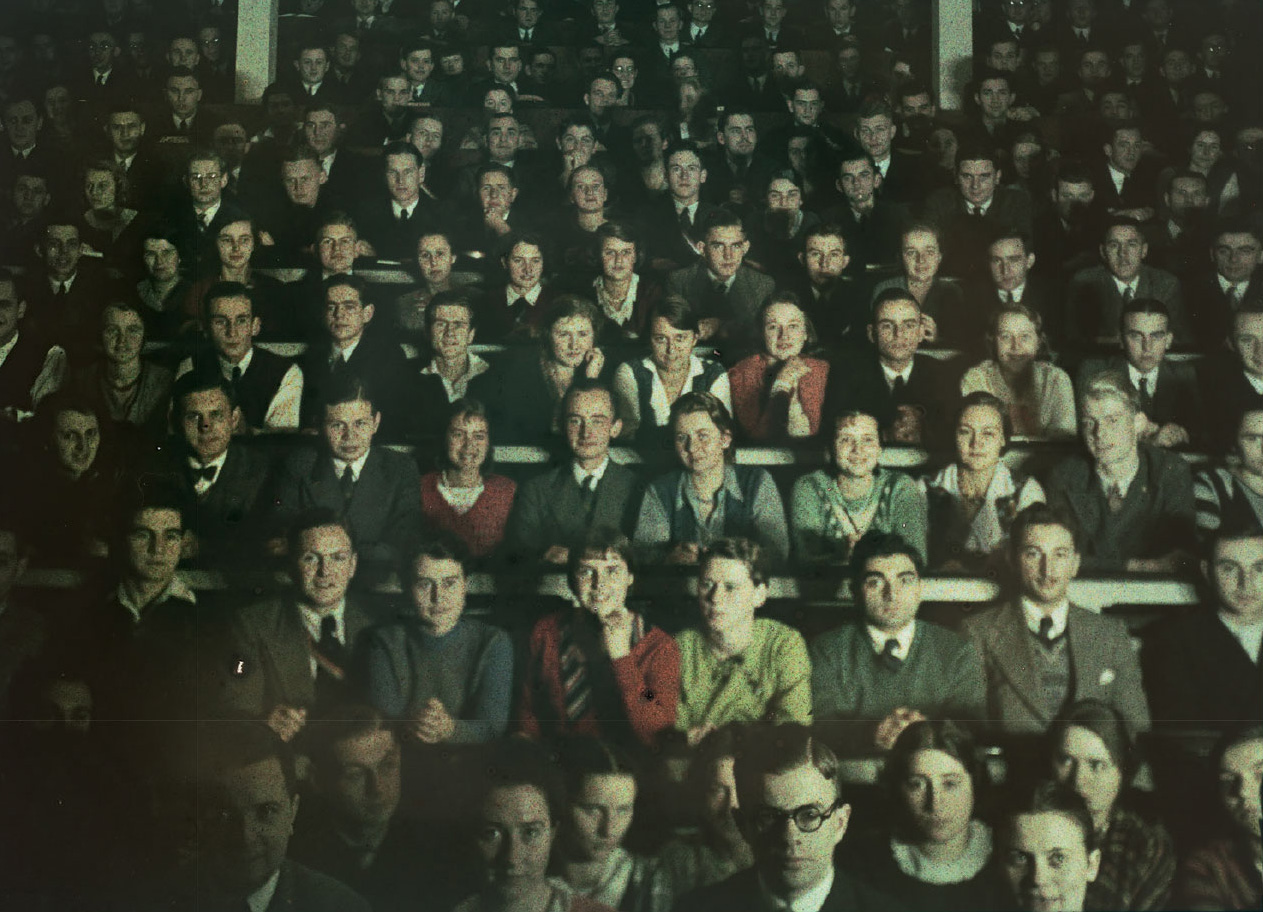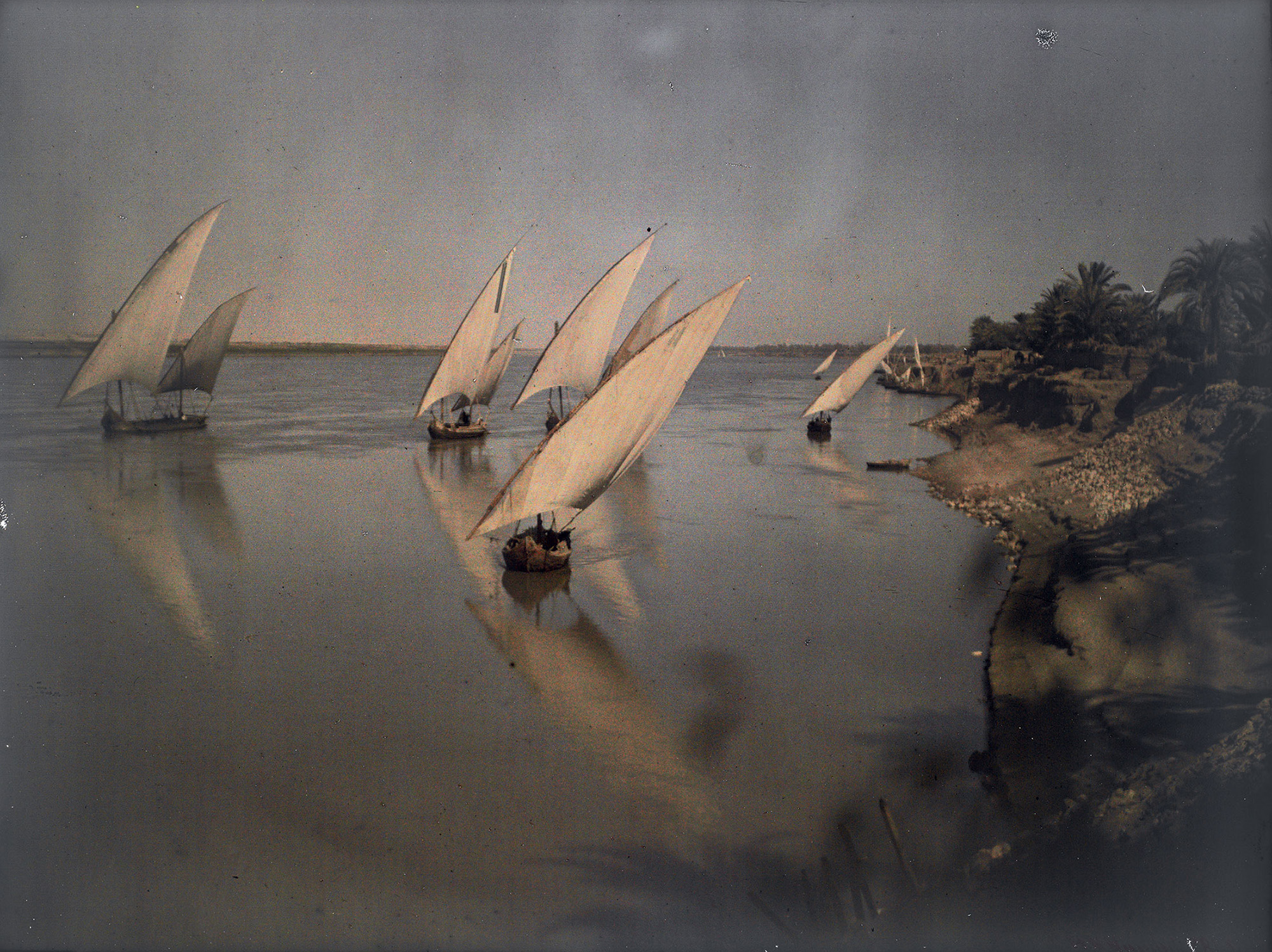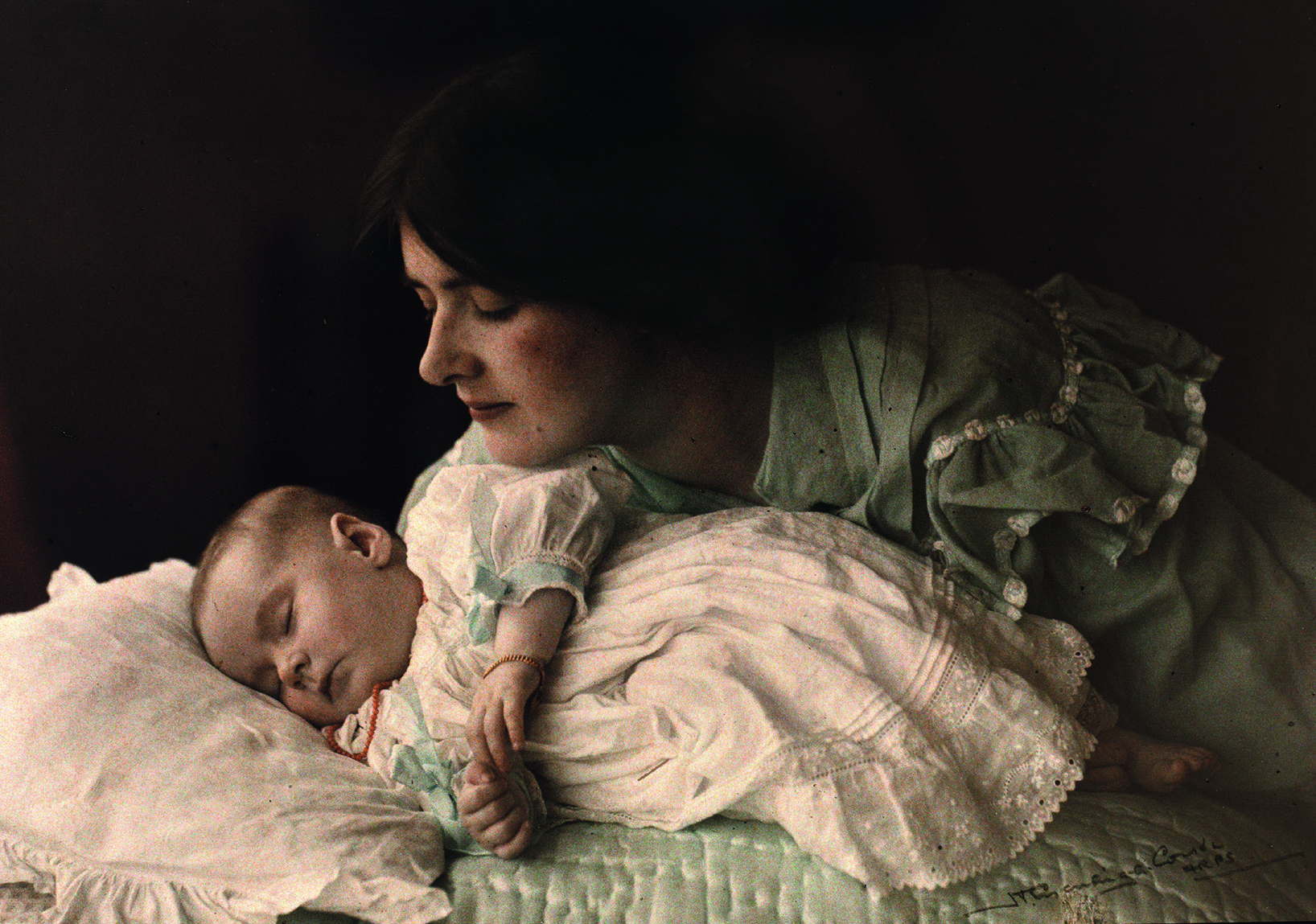‘Christina, August 1913’, autochrome, by Mervyn O’Gorman, The Royal Photographic Society Collection/V&A Museum, London/Estate of Mervyn O’Gorman
Viewing an autochrome today is a unique experience, a carefully orchestrated event. With curtains drawn, the room is in complete darkness but for a soft glow emanating from a small lightbox in the corner.
A sign outside warns, ‘Do not enter: light-sensitive work inside’. For contemporary conservation reasons the autochrome can be illuminated only at a low level, subjected to light for just the briefest time. With gloved hands you gently place the delicate glass plate on the lightbox, the plate emitting a faint ‘clink’ as it touches the lightbox’s plastic surface.

‘Students in a lecture at University of Königsberg [Kalingrad], 1929-33’, autochrome, by F A Paneth, The Royal Photographic Society Collection/V&A Museum, London/Estate of F A Paneth
For a fleeting moment you glimpse the images usually hidden in the dark, fragile plate: beautiful, pastel portraits of well-dressed women; pointillist landscapes, shimmering with light; vivid, vibrant studies of flowers, fruit and freshly caught trout, their scales glistening with water droplets. Then, time is up: the plate is carefully inserted into its protective sleeve and returned to the dark, cold confines of the museum store.
Rare, fragile and light-sensitive, autochromes are treasured objects in museum collections. Both the plates themselves and the images they depict are as alluring today as when the process was first made available in the early 1900s. The autochrome, a glass plate with no negative, feels aligned with the origins of photography in the mid-19th century. Yet the presence of colour makes it feel immediate and modern, related to our understanding of colour as part of contemporary experience.

‘Nile Boats at Luxor, January 1914’ , autochrome, by Helen Messinger Murdoch, The Royal Photographic Society Collection/V&A Museum, London/Estate of Helen Messinger Murdoch
Colour photography is now so commonplace that it is difficult to imagine the anticipation and excitement caused by the autochrome when it was first announced in 1904 by its inventors, Louis and Auguste Lumière, who are best known today as pioneers of cinema. Upon its commercial release in 1907, the autochrome was hailed [in newspaper articles] as a ‘revelation’ and ‘a revolution in photography’. French photographer Albert Londe declared in 1909: “Whoever has tried it will not want to do anything else.”
The Victoria and Albert Museum (V&A) in London holds more than 2,500 autochromes by celebrated photographers and skilled amateurs alike. Research surrounding the collection reveals a remarkable picture of the reception, adoption and impact of the autochrome, in Britain and abroad.

‘Mother and Child, 1912’, autochrome, by Henry Essenhigh Corke, The Royal Photographic Society Collection/V&A Museum, London
The publication in October 2022 of the book Colour Mania: Photographing the World In Autochrome, through an exploration of the V&A’s collection, delves into the autochrome’s use and eventual abandonment: the wonder and frustration generated by the process, the emergence of colour societies and publications, and the subjects sought for colour representation. Beyond the obvious beauty of the works, the book seeks to interrogate some of the darker histories depicted by or surrounding the autochrome during its period of creation.
This is an edited extract from the book Colour Mania: Photographing the World In Autochrome by Catlin Langford, published by Thames & Hudson in October 2022. Langford is a former curator of photography at the Victoria and Albert Museum, London

